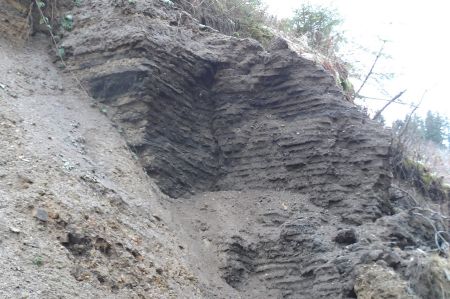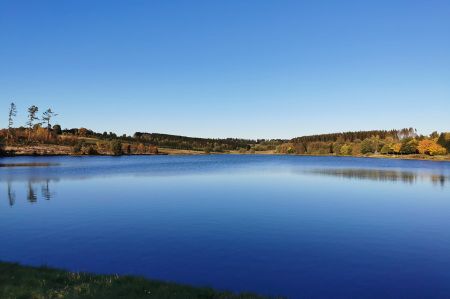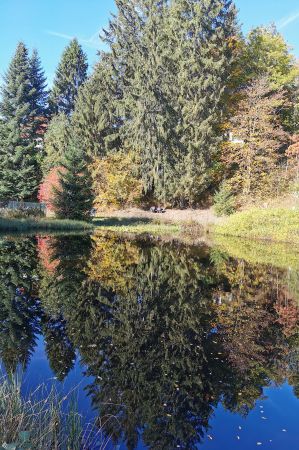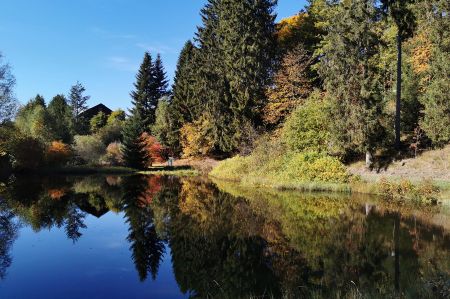Lawn sod sealing in the dam core of a pond dam
- Written by Portal Editor
We had already reported on the large number of artificially dammed ponds, which are so different in size, for use as backwater to operate the ancient mines in the Harz Mountains in the first article “Pixhaier & Schwarzenbacher Teich am Prahljust Campsite”.
Around Clausthal-Zellerfeld in particular there are a large number of such ponds, which of course are no longer used for mining purposes, but which have now almost naturally been integrated into the landscape.
Naturally available dam building material in the area is used
 Interestingly, the barrier structures are usually constructed as earthen dams. The dam contact areas were often not even cleared of the existing vegetation and topsoil. The dam fill material used was usually even extracted on site: mostly small quarries were built in the future storage space, whereby the storage space was enlarged at the same time. The subsoil was not compacted when the dams were filled. For this reason, even today, after more than 300 years, settlements of several millimeters per year are observed on the dams.
Interestingly, the barrier structures are usually constructed as earthen dams. The dam contact areas were often not even cleared of the existing vegetation and topsoil. The dam fill material used was usually even extracted on site: mostly small quarries were built in the future storage space, whereby the storage space was enlarged at the same time. The subsoil was not compacted when the dams were filled. For this reason, even today, after more than 300 years, settlements of several millimeters per year are observed on the dams.
No loam or clay could be used as sealing material because there were not enough of them in the Upper Harz Mountains. However, the miners from the Upper Harz had discovered through experience that turf could be used excellently as a sealing material: Using turf laid on top of one another like masonry, a sometimes meter-thick layer was built into the dam, which ensured the tightness of the dam. Observations show that these are still doing their job even after centuries and that they are not subject to any significant weathering, even when the dam structures have been shut down.
 A so-called wooden gutter, which was usually made of oak wood due to its longer durability, served as the bottom outlet. A so-called "harrow" served as a closure, which, like a plug, closed the inlet opening of the wood chute and could be pulled using a linkage. Both turf seals and wooden bottom outlets are still in use in many ponds.
A so-called wooden gutter, which was usually made of oak wood due to its longer durability, served as the bottom outlet. A so-called "harrow" served as a closure, which, like a plug, closed the inlet opening of the wood chute and could be pulled using a linkage. Both turf seals and wooden bottom outlets are still in use in many ponds.
The dams are between 4 and 15 m high and the storage volumes of the reservoirs vary between 10,000 and 600,000 m³. A particular exception is the Oderteich, northeast of Sankt Andreasberg, which is the only pond that was not sealed with turf but with crushed granite and which, with a dam height of 21 m and a storage volume of 1.7 million m³ of water, clearly has the dimensions of the other ponds towers over.
Upper Harz ponds with their own flora and fauna
 Although the waters are artificial, a rare flora and fauna has developed in many of the Upper Harz ponds, as these are nutrient-poor and rather cool still waters. The noble crayfish, which became extinct in most European waters due to the crayfish plague, was able to survive in many Upper Harz ponds thanks to the isolated location. Operators and fishing tenants are successfully trying to strengthen the population.
Although the waters are artificial, a rare flora and fauna has developed in many of the Upper Harz ponds, as these are nutrient-poor and rather cool still waters. The noble crayfish, which became extinct in most European waters due to the crayfish plague, was able to survive in many Upper Harz ponds thanks to the isolated location. Operators and fishing tenants are successfully trying to strengthen the population.
Centuries of operation with constantly changing water levels has also created a habitat for extremely rare plant communities: on many pond floors you can find whorled chickweed, stag's spring or strandling. They depend on the fact that changing water levels in the reservoir continue to be driven, and the nature conservation authorities have agreed an operating plan with the operators that ensures the existence of these plants in the water bodies concerned. Kleinseggenried can be found at other ponds
The fish stock is mainly characterized by the leasing fishing clubs that stock the ponds with fish. Only native fish species are desired, especially eel and catfish stocking should be avoided because of the incompatibility with the noble crayfish population.
Please read as well:
